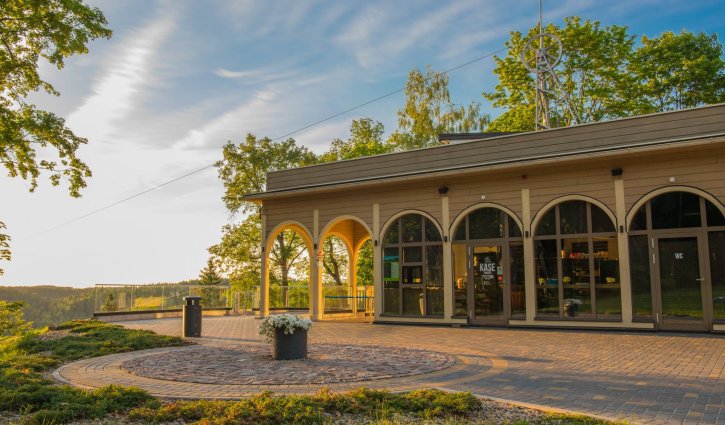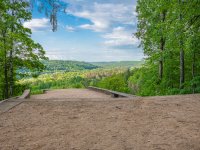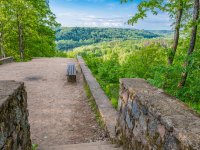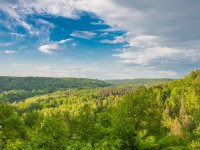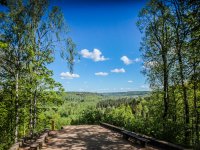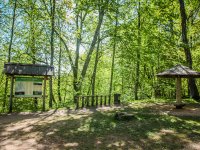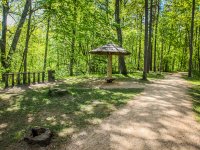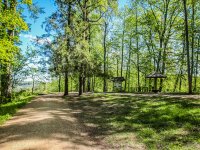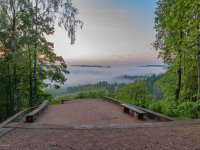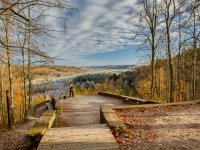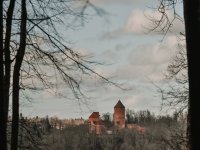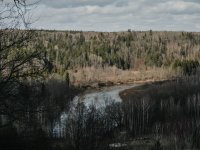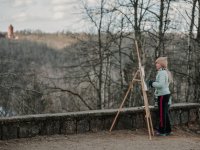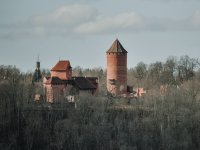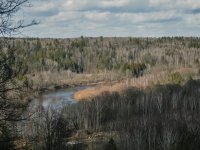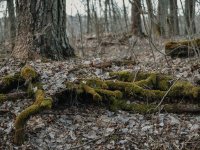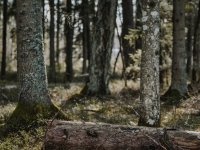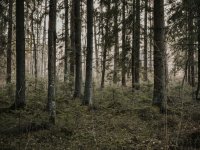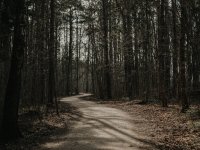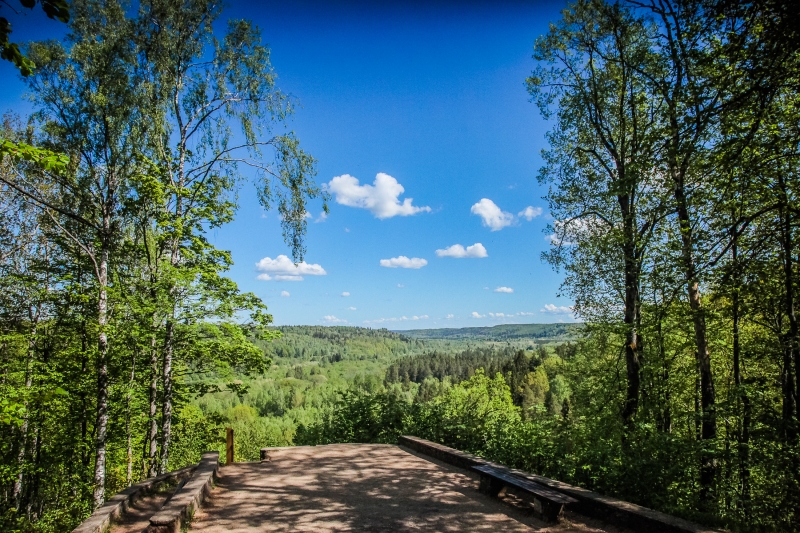
The breathtaking landscapes that can be seen from the cliff of the Gauja valley have been painted by such great artists as Jūlijs Feders, Janis Rozentāls, and Vilhelms Purvītis hence the name – Painters' hill. Paradise hill or Painters' hill is a convenient place to reach, for visitors who enjoy beautiful views and nature sites.
| Address | Situated between Vējupīte (Vejupite) ravine and the River Gauja primeval valley |
| Coordinates | 57.174864 24.865852 |
| Phone | +371 67971335 |
| info@sigulda.lv |
One can see as far as 12 km/8 miles from Painter's hill. Looking over the valley is the tower of Turaida castle. The Gauja River is 80 meters below and creates a majestic view to enjoy. Originally, it was thought that the valley had been created by the melting water of ancient glaciers but an even older valley, dating from the Devonian Era, has since been discovered underneath this.
The inception of the Gauja valley dates back 300-370 million years although its current shape was formed from debris within melting glacier water about twelve to thirteen thousand years ago. Back when the Liv language was spoken in the area, the river was called Koivo or sacred river. In ancient Latvian, Gauja means ‘large quantity’ thus the Large River. The Gauja River begins its run from the Vidzeme Heights and flows 452 km/281 miles earning it the title of the longest river in Latvia. The Gauja valley is 1 to 2.5 km miles in width and falls 85 meters/93 yards deep. One-fifth of the Gauja River’s total run is protected within Gauja National Park.
In the past, the Gauja served as a merchant's route and waterway for ships. It was also the border between the lands of the Livs (Finno-Ugric peoples) and the Latgallians or Letts (Indo-European peoples). Merchants would ship a multitude of goods via the Gauja river, including herring, spices, salt, weapons, and jewelry. Along the way, they purchased honey, wax, and furs from the locals. Until the second half of the 20th century, timber was floated down the Gauja.






